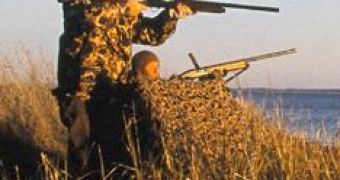1.The 90-350 pellets of a cartridge leave the gun pipe with a speed of about 240 m (800 ft) per second, stringing at a distance of 30-35 m (100-118 ft) from the gun on a length of 3.2 m (11 ft).
2.The time period between the passing of the first and the last pellet of a shot, at a distance of 30 m (100 ft) from the gun, is about 0.15 seconds. The differences are small not only between cartridges of different marks, but also between different calibers. In the interval of 0.15 seconds, a flying pheasant or a running hare makes 20-30 cm (0.6-1 ft).
3.In the stomach of a swan dead of lead intoxication, there were 359 lead pellets, taken with the food from the bottom of the water. 20 years ago, 25 % of the Danish swans presented at radiographies remains of lead pellets.
4.Years ago, Swiss biologists analyzed 308 hunted mallards, and found that 37 had in their stomach lead pellets. The 3-6 lead pellets, taken with the stones necessary for grinding the food, caused the slow and sure death through lead poisoning of the wild ducks.
5.In 29 US states the hunt of water fowls is allowed only exclusively with iron pellet cartridges.
6.A research found years ago, on the Danish shore of the North Sea, 10-400 lead pellets per square meters in waters up to 1 m (3.3 ft) deep, the area where most wild ducks and geese feed. That's because of the activity of 60,000 hunters, shooting annually 1-1.75 million wintering water birds.
7.In the '80s, rooks were considered a pest in France, and were combated during the spring at the nest using 4-5 mm pellets, besides other methods.

 14 DAY TRIAL //
14 DAY TRIAL //